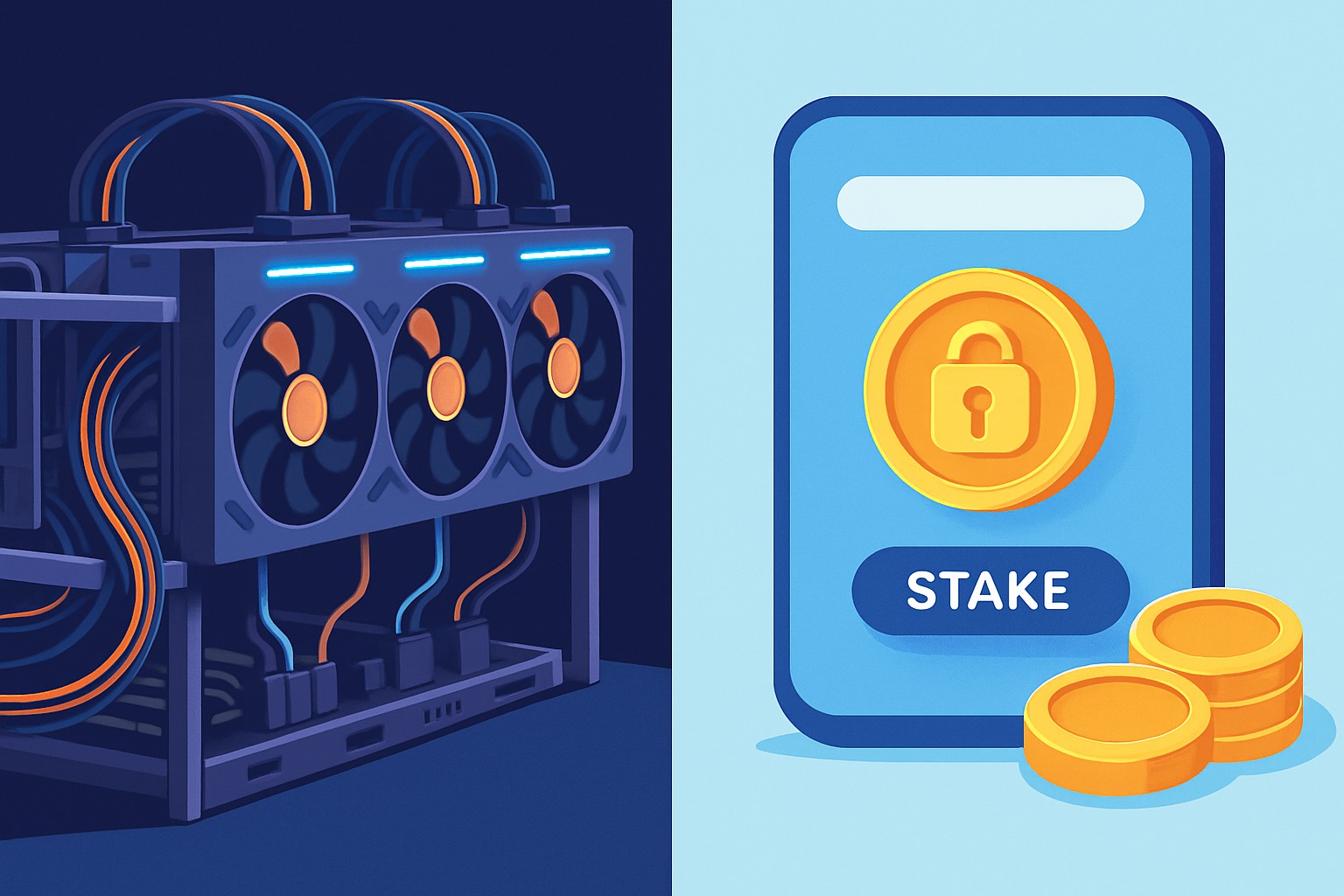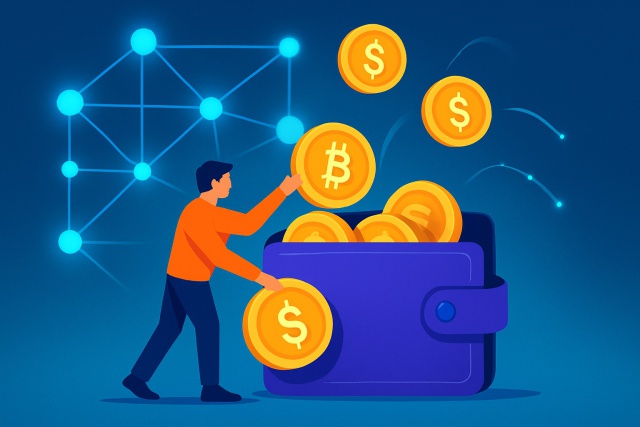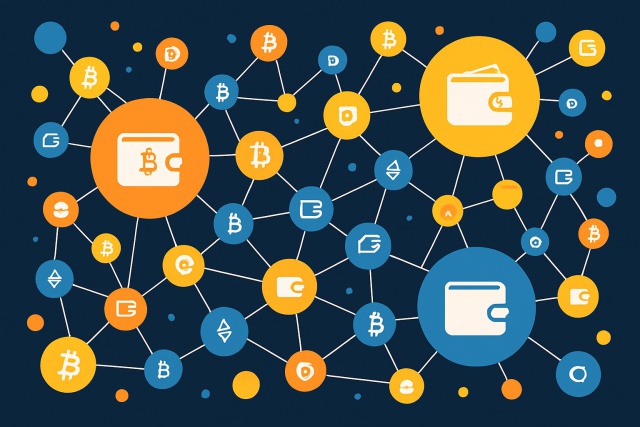Staking vs Mining for Crypto Beginners


Cryptocurrency has really taken off pulling in a whole bunch of eager beginners looking to earn some rewards along the way. Getting a good handle on the key difference between staking and mining is actually pretty key.
This article takes a straightforward no-nonsense approach to staking and mining to help newbies in the cryptocurrency world decide which path suits them best. We carefully unpack how each method works and the costs you will need to consider. We also explain the upsides and potential pitfalls and the tech know-how you would better have up your sleeve.
What Exactly Goes On in Crypto Mining?
Crypto mining is all about verifying and recording transactions on a blockchain using Proof of Work consensus. Miners put their trust in powerful computers to crack tough mathematical puzzles, often requiring specialized hardware like ASICs or GPUs to get the job done.
What Exactly Does Crypto Staking Mean Anyway?
Staking is basically holding and locking up your cryptocurrency within a Proof of Stake (PoS) network to help keep the blockchain safe and running smoothly. In return you earn some nice passive rewards along the way. Some popular coins people stake include Ethereum 2.0, Cardano and Polkadot.
Staking and Mining Unlocking Key Differences You Should Know
| Criteria | Staking | Mining |
|---|---|---|
| Process Mechanism | Proof of Stake (locking up coins to help validate blocks) | Proof of Work (cracking tough puzzles) |
| Hardware Requirements | Pretty light, just a regular computer or a supported wallet will do | Beefy GPUs or specialized ASIC rigs needed |
| Initial Cost | Generally low, depending on the staking minimum, so you won’t break the bank | High upfront costs, thanks to mining rigs and all the setup hassles |
| Energy Consumption | Low, just your typical electricity use, nothing wild | Very high, mining operations gulp power like it’s going out of style |
| Technical Skill Required | Moderate, mainly wallet setup and picking the right pools | High, you’ll need to tinker with hardware and handle troubleshooting like a pro |
| Rewards | Steady and predictable, based on how much you stake and the network’s rules | Variable and a bit of a rollercoaster, shaped by your hash power and a sprinkle of luck |
| Risk Factors | Lock-up periods can tie you down, plus penalties for missteps and platform risks | Hardware can fail, returns are unpredictable, and pools come with their own headaches |
| Environmental Impact | Low carbon footprint, so you can feel a bit better about your green creds | Heavy energy use and a pretty significant carbon footprint, not exactly eco-friendly |
Pros and Cons
Let's weigh the ups and downs here, shall we? Every coin has two sides, and this one’s no different. Buckle up as we dive into what’s great and what’s a bit less shiny.
- Mining can deliver significant rewards when the network is buzzing with activity and often offers better long-term profitability if you’re in it for the marathon not the sprint.
- Mining plays a important role in locking down highly decentralized networks through a robust Proof of Work consensus because it acts as the network’s security guard.
- Mining requires a hefty upfront investment in hardware and some technical know-how since this isn’t exactly a plug-and-play hobby.
- Mining uses a lot of electricity which sparks environmental debates and stacks up operating costs faster than you might expect.
- Staking offers a way to earn passive income with much less energy use and minimal hardware making it a more approachable option for people looking to dip their toes in without breaking the bank.
- Staking generally has a simpler setup and can be accessed through many wallets and exchanges without the need for specialized equipment. This is a relief for those who’d rather avoid gadget overload.
- Staking isn’t risk-free. You’re locking up your coins and might face penalties if you slip up on protocol rules. There’s also that nagging worry about platform reliability.
- Depending on the network staking rewards can be lower or a bit more unpredictable compared to mining so it’s not always the golden ticket.
- Mining wrestles with its own hurdles like fluctuating hardware prices and gear that can become obsolete very quickly keeping miners on their toes.
- Since staking depends on the blockchain’s protocol rules any tweaks can shake up your returns and affect the network’s overall security so it pays to stay informed.
Staking usually provides a friendlier doorway for beginners since it tends to be less costly and complicated. Mining might promise bigger rewards, but it often calls for a fair bit more technical know-how and upfront investment.
Thinking About Costs and Profitability The Nitty Gritty That Makes a Difference
Mining calls for a hefty upfront splash on specialized hardware and wallet-draining electricity bills that keep rolling in—both of which can eat into your profits. On the flip side, staking usually means you’re locking up a minimum chunk of crypto for a set period which keeps ongoing costs low. The rewards often don’t skyrocket as much.
Technical Requirements and Setup Overview
Let's roll up our sleeves and dive into the nitty-gritty of what you will need and how to get everything up and running smoothly.
- Mining involves buying and setting up ASICs or GPU rigs, along with cooling and power systems built to last the long haul.
- Operators need to install specialized software like CGMiner or BFGMiner and fine-tune mining pools to squeeze out the best possible performance.
- Keeping the hardware humming smoothly means regular maintenance and troubleshooting are a must, helping to maximize uptime and avoid unpleasant surprises.
- Staking means picking a wallet or exchange that supports the staking protocol for the coin you’re interested in.
- Depending on the blockchain’s rules, you might have to run validator nodes yourself or simply delegate your stakes through staking pools.
- Setting up staking tends to be straightforward and less technical, making it a friendlier option for casual investors and those dipping their toes in for the first time.
- Both mining and staking require solid wallet security—think hardware wallets or rock-solid password habits—to keep your funds safe and sound.
Security and Potential Risks You Really Need to Know
Mining comes with its own share of headaches including hardware theft and sneaky software glitches. There is also the constant threat of pool attacks that can disrupt your payouts. Mining profits tend to be a rollercoaster, rising and falling which can lead to unwelcome financial surprises. Staking is not simple either. It has challenges like slashing penalties when validators make mistakes or go offline unexpectedly. Funds can also get locked away with no quick access while staked. Additionally, there are risks from platform problems such as exchange hacks or issues with staking services.
"If you’re just dipping your toes into the world of earning through crypto, it’s really important to get a good grasp on the risks tied to mining and staking. Starting off with smaller, manageable investments on reliable platforms is usually the safest bet—plus, it lets you build some valuable hands-on experience without feeling like you’re throwing caution to the wind." – Crypto Security Expert
Comparing Environmental Impacts A Closer Look
Mining leans heavily on energy-hungry Proof of Work protocols and results in sky-high power consumption often noted for its carbon footprint. Meanwhile, staking takes a much greener route and requires only a fraction of the computational grunt which significantly trims down environmental impact.
What Option Works Best for Beginners? Let us Dive In
When considering staking vs mining, staking usually feels like a friendlier way in for beginners since it requires less upfront cash and a simpler setup. It also causes fewer technical headaches. Meanwhile, those with resources who are not afraid to roll up their sleeves might lean towards mining. Mining can offer bigger rewards but demands more effort and carries higher risks.
Take a good, honest look at your budget. Factor in the cost of hardware and those minimum staking amounts, along with any ongoing expenses that might sneak up on you.
Think about your own technical skills and how comfortable you feel tinkering with hardware or managing software setups. There is no shame in knowing your limits here.
Nail down your earning goals. You may be after a steady stream of passive income or willing to take some risks for potentially bigger returns.
Dive into different cryptocurrencies and their staking or mining methods because finding the right fit can make all the difference.
Have a clear sense of your risk tolerance, keeping in mind that market swings or penalties might affect your wallet from time to time.
Start Your Crypto Journey with Coinbase Today
Ready to enter the cryptocurrency market but unsure where to begin? Coinbase makes buying, selling, and storing digital assets simple and secure for beginners and experts alike.








